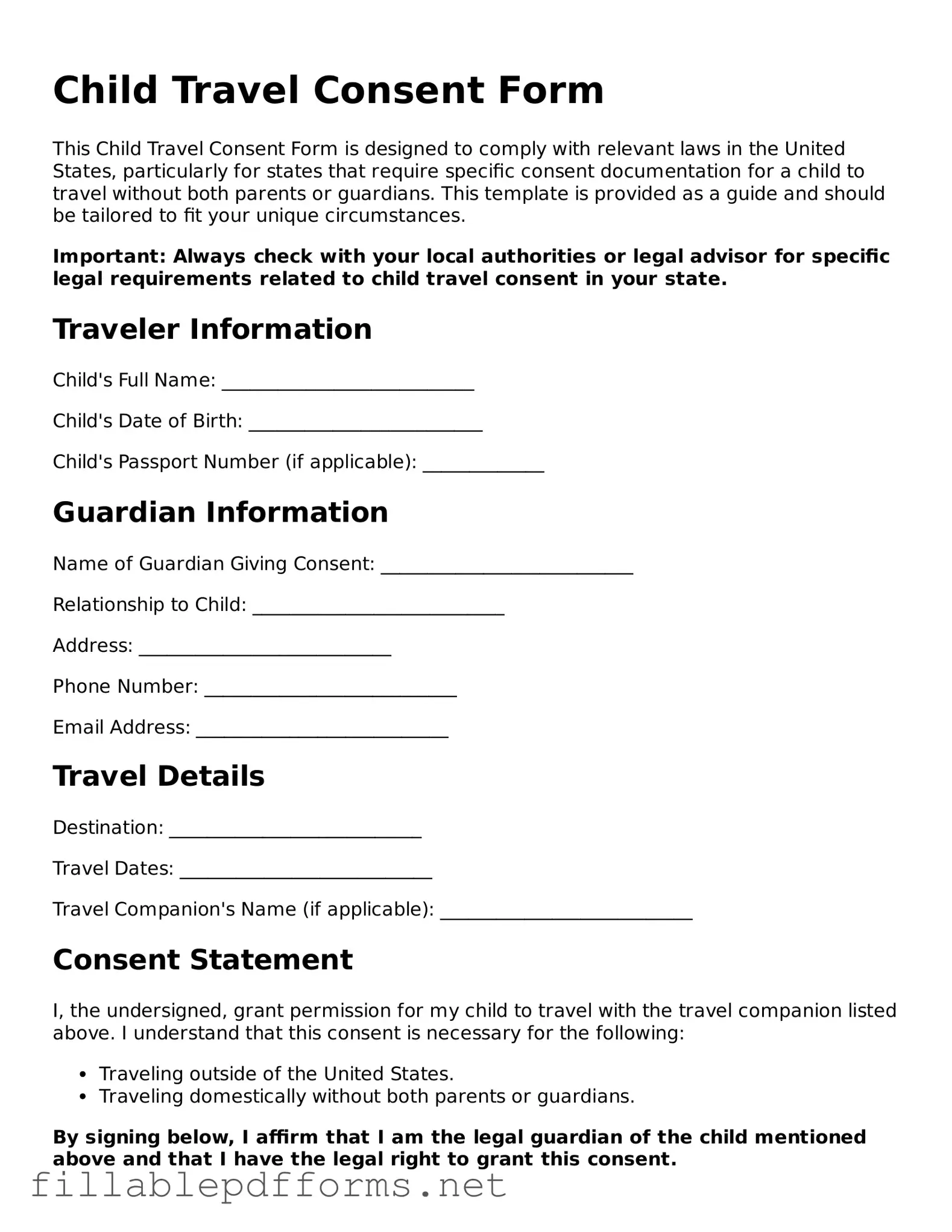Traveling with children can be an exciting adventure, but it also comes with its own set of responsibilities. One crucial aspect that parents and guardians must consider is the Child Travel Consent Form. This form serves as a vital document that grants permission for a child to travel, whether it's with one parent, a guardian, or another adult. It outlines who has the authority to take the child on the journey, ensuring that all parties are on the same page. This consent form is particularly important when traveling internationally, as it can help prevent misunderstandings or legal issues at borders. Additionally, it often includes details such as the child's itinerary, the duration of travel, and emergency contact information. Having this form prepared not only provides peace of mind but also safeguards the child's well-being during their travels. Understanding its significance and knowing how to properly fill it out can make all the difference in ensuring a smooth and enjoyable trip for everyone involved.
